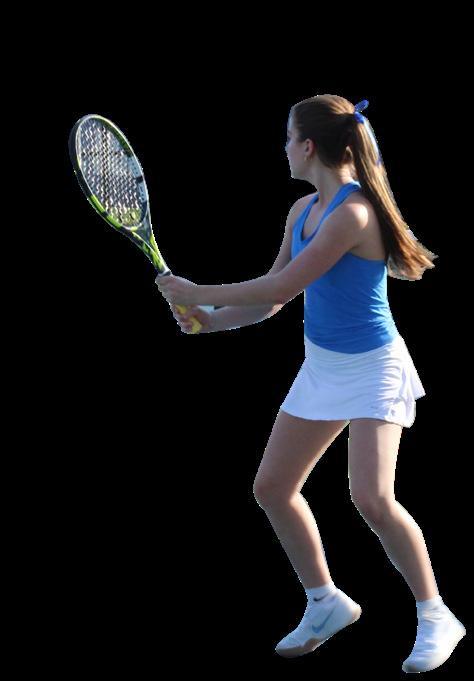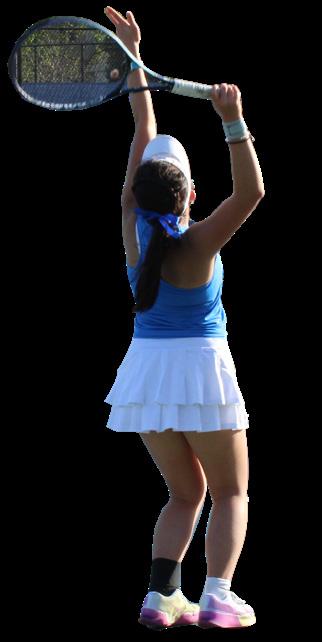

LEARNING TO LEARN
How UDL and Habits of Mind have changed the way attention spans have been approached in the classroom
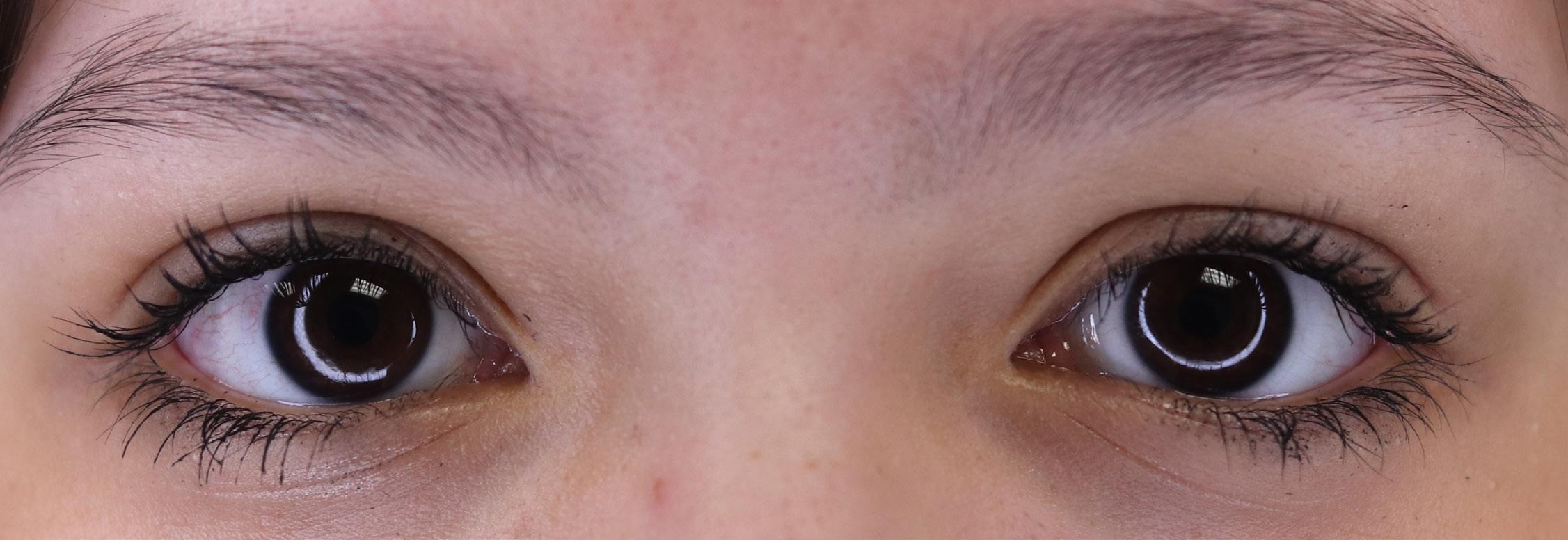


THE T RIANGLE
EDITORS-IN-CHIEF
Alex Osburn
Ajay Singireddy
Jasmine Yang
IN-DEPTH TEAM
Izzy Munn
Sylvia Sasse
Deshna Venkatachalam
Lydia Weed
PHOTO EDITORS
Novah Ulm
Grace Wheatley
ART DIRECTOR
Sylvia Sasse
SOCIAL MEDIA TEAM
Chloe LaVelle
Brynn Stewart
Deshna Venkatachalam
STAFF
Jocelyn Aguilar
Sarynel Barbosa
Nicolas Bowers
Aidan Brown
Liz Carrigan
Gabe Carrillo
Claire Davis
Stella Gaylord
Annie Green
Jaedyn Greenlee
Lois Guest
Cecilia Gutierrez
Maia Jamieson
Emma Warnock
ADVISERS
Roth Lovins
Rachel McCarver

look into how students can be involved in the Nomad art program
The haters are gonna hate, but here’s my opinion on Swift’s new album
GALA GALORE
May marks the Met Gala Madness CAUSING A RACKET
North’s tennis players reflect on how their season is going
How UDL and Habits of Mind have changed the way attention spans have been approached in the classroom.
Editorial Policy
The Triangle is the designated forum for student expression at Columbus North High School. The student staff chooses all content.
Signed columns published in The Triangle express the writer’s personal opinion and not the views of The Triangle, student body, BCSC, administration, board of trustees or faculty of Columbus North.
The Triangle practices ethical journalism by providing balanced and fair coverage as determined by community standards. The Triangle strives to achieve 100 percent accuracy by checking sources, spelling, and quotes and attaining multiple sources.
The Triangle encourages letters to the editor, but reserves the right to reject them for reasons including but not limited to lack of space, multiple letters of the same topic and personal attacks contained in the letter. The Triangle will not edit for content, but reserves the right to edit for grammar and length. Letters should be submitted to room 1507 or sent via e-mail to administrator@ cnhsmedia.com. All Letters much be signed by all persons involved in writing the letter, which the staff will check for validation. A letter sent via e-mail must be validated with a signature from the writer before The Triangle will publish it. If responding to a publication, letters must be turned in within one week of that
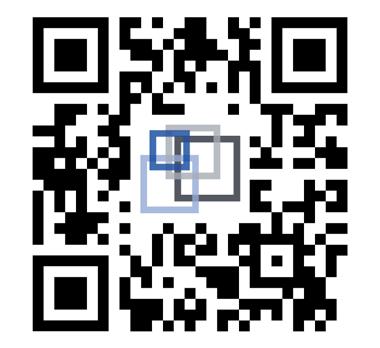
publication’s distribution.
In the event of death, The Triangle will run a standard obituary. Pertaining to work submitted via social media sites (Facebook, Twitter, etc.), The Triangle will only accept written submissions from the original poster and owner and will only publish entries with the permission of the original poster and owner. The Triangle will not edit submissions for content and reserves the right not to publish them for reasons including but not limited to lack of space, multiple submissions of the same topic, vulgar or incendiary content. The Triangle will not publish photographs from Facebook. Posts on The Triangle’s social media pages by readers are owned by the readers and do not necessarily express the views or opinions of the staff. The Triangle is not responsible for their content and reserves the right to delete and report any inappropriate and unnecessary posts. By posting on The Triangle’s social media pages, the poster grants The Triangle permission to publish the contents of that post. In cases when a source’s information may bring ridicule or incrimination upon himself or herself, the editorial board reserves the right to cite the source as anonymous. The Triangle will never use composite sources and pass them off as anonymous sources.
NOMAD NOTES
How students can get involved in the Nomad art program
by Gabriel Carello design by Aidan BrownCreativity can come in many different forms, some written, some spoken, some are even built. No matter the kind of creativity it is ultimately unique to the person. What if someone wants to share and showcase their talents and vision? Thanks to Ian Kohan, Nomad’s founder and adult leader, along with the effort of every youth leader. The Nomad Art festival is exactly where young artists can do that.
“Nomad is an arts and music collective that I created 8 years ago with a student from East High School,” Kohan said, “I had wanted a safe place for all youth to be able to share and sell their music, art, poetry, and creativity with other youth. I wanted it to be youth-led so that they could make it truly theirs.”
Nomad allows for a community of creative youth to express themselves and be noticed by other youth. The program allows youth to express and take a step in sharing their creative vision with others in a friendly and welcoming environment. Kindred Shafer, a senior at East who is a leader within Nomad, shares her similar view of the program.
“Nomad is a monthly event led by youth, for youth” Said Shafer. ”It’s a community for young artists and musicians to share what they love the most, the arts.”
Being a leader is a volunteer position, with Nomad being youth-led and relying on local youth to set it up. Kohan shares what qualities he would look for in a volunteer.
“Any and all are welcome.” Kohan said. “We need more creatives that can bring more student art, more diverse music, more creative ideas but we also love good organizers who can make the events flow more freely, as well as people interested in marketing to improve nomad’s reach to other youth. We also want to be as diversely represented in our leadership
WHAT’S
as we can be. We truly welcome all to join.”
The details of each Nomad event are going to be different from the last month, so it is important to stay up to date with these monthly changes. Without being a leader, members of the community can check out Nomad on social media for event details. Shafer shares the direct link to Nomad itself.

“Students can find our most up to date information on our instagram @ nomadartcolumbus or on flyers posted around both schools.” Shafer said.
Nomad allows for creativity to flow freely and creates a comfortable environment for artists, musicians, and writers to share their talents with other creative and like minded people. Columbus East Senior Jackson Warren shares his feelings on why nomad is so important and why it makes a difference in Columbus as a whole.
“Truthfully it’s because the arts scene in Columbus is very limited.” Warren said. “You’ll see in a lot of other places, like
Bloomington, for example, they have a very strong scene that is powered by the huge student base at IU, especially in their music school or art and design school. However, Columbus doesn’t have that since the one college here, IUPUC, doesn’t have any creative arts programs that feed back into the community. Most of the art events in town are more focused on the older and middle aged demographic, and especially in the field of architecture, so if you aren’t in either of those groups you are kind of out of luck. That’s why Nomad is important, because we want to give a creative outlet to young artists and musicians who don’t have it anywhere else in columbus.”
GOING ON AT NOMAD?
Live music perfomed by local and touring indie bands
Pottery, comics, jewelry, and more from local and international artists
Clothing and handmade knitted items
Vendors selling comics, art, clothing, plants and more


CONGRATULATIONS TO THE CLASS OF 2024!
MISSION: Promote Excellence at CNHS for Students, Faculty, and Alumni by providing:
• Scholarships and Student Assistance Grants
• Teacher Appreciation Program and Faculty Assistance Grants
• Alumni Communication Channels and School History
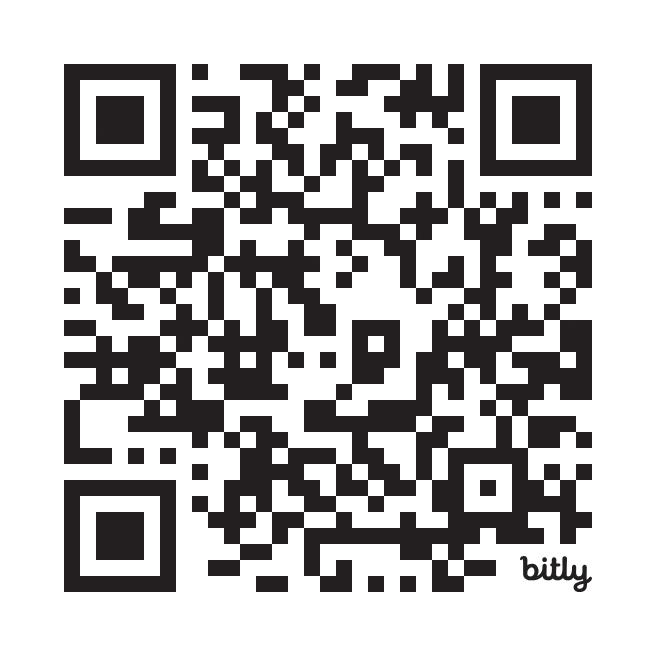
STAY BLUE: Fill out the Google form using the QR code or bit.ly link below
FREE: Sign up for our e-newsletter at True Blue sign-up or use our website columbusnorthalumni.org
Join our Facebook page @Bull Dog Alumni Association
IMPERIAL DANCE
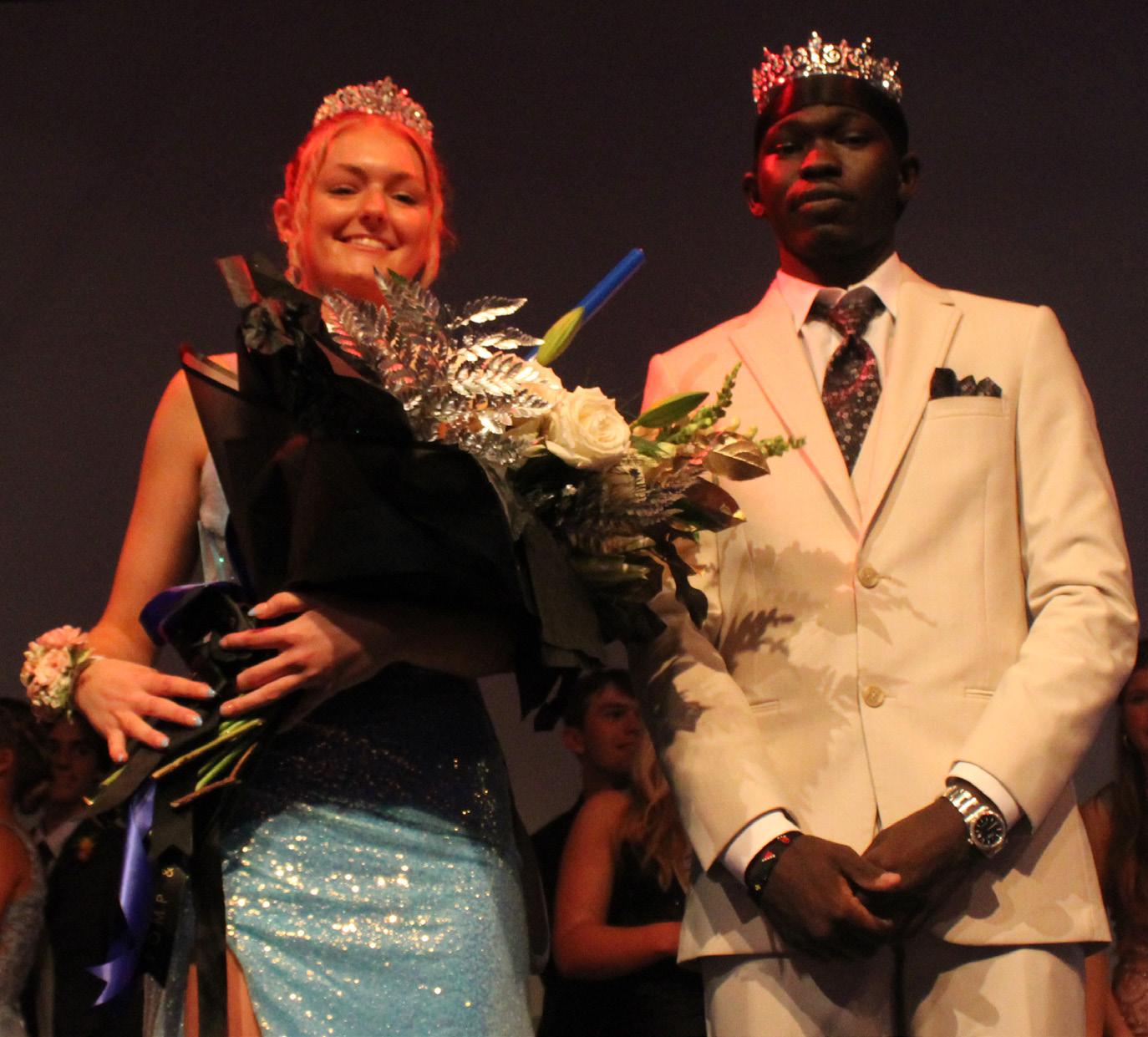
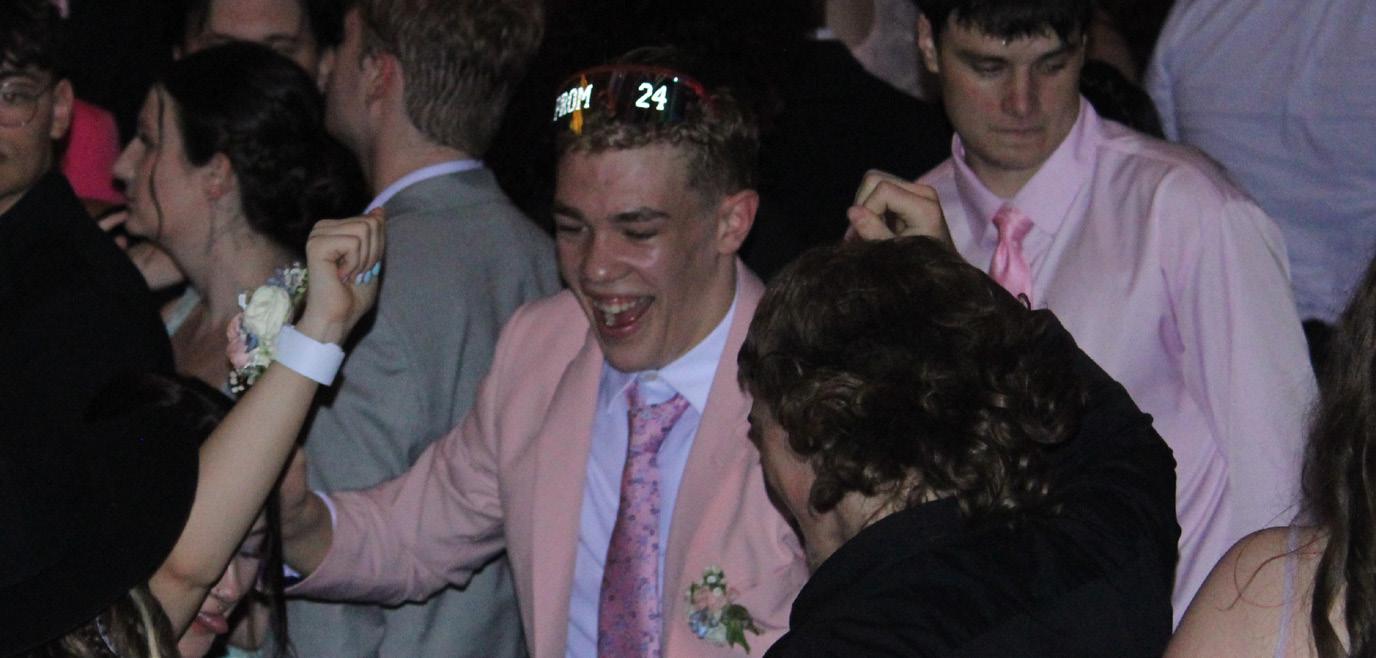
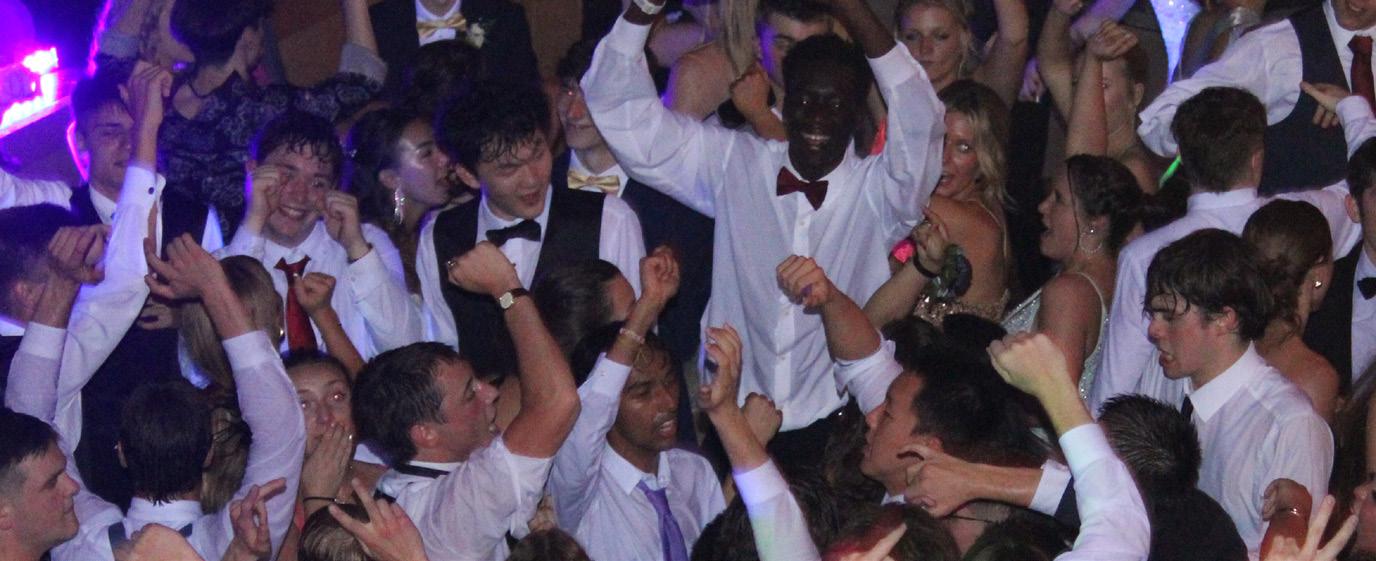
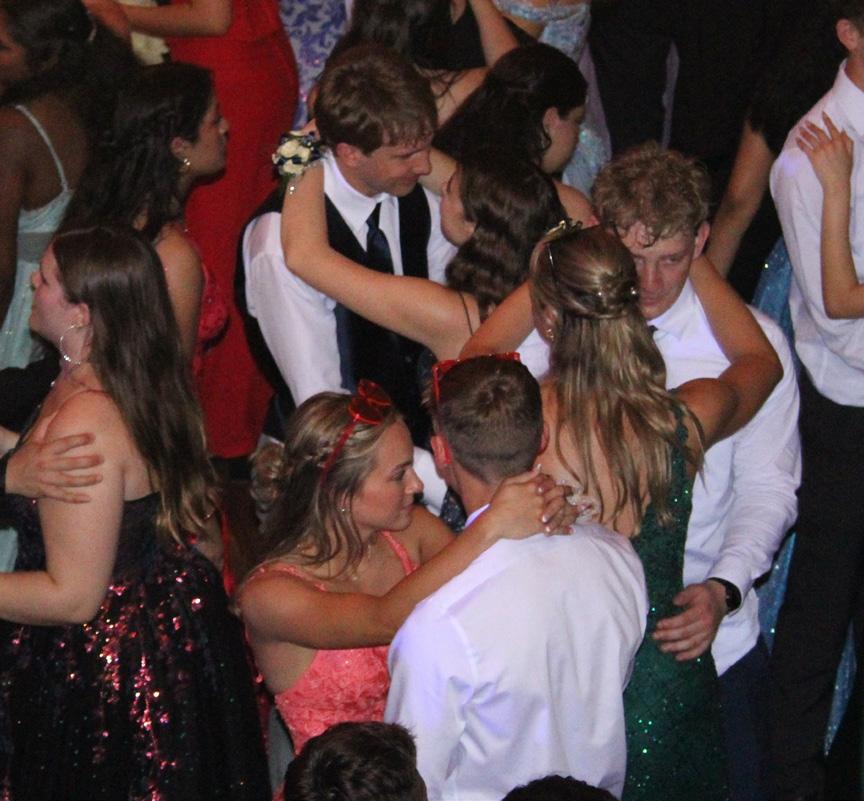


Students dance the night away at BCSC’s Star Wars themed Prom design by Jaedyn Greenlee photos by Lois Guest 3 5 2
1. Seniors Kaitlin White and Lual Biing celebrate being crowned Prom Queen and King.
2. Students dance at Prom.
3. Juniors Reese Euler and Keaton Stephenson wave at the crowd in the Prom Parade.
4. Junior Evan Saevre dances with a group of students.
5. Students participate in the annual Prom parade.
6. Students enjoy the music at Prom.
AMERICAN PIE




1 2 3 4 5 6 7
4.
Luke Dornfeld, Ravi Varma, Kingen Burbrink, Frankie Polyak and Austin Clark sing “ShBoom” by The Crew Cuts.
5.
Foreigner.
6.



OPINION
MET GALA GALORE
by Cecilia Gutierrez
The first monday of May marks one of the most arguably biggest nights for fashion: The Met Gala. With its charitable reasons and celebrity guests, the glitz and glamor of the Met Gala are no joke.
This year’s theme was “The Garden of Time”, inspired by JG Ballard’s story of the same name, raising funds for the Metropolitan Museum’s new costume exhibit titled “Sleeping Beauties: Reawakening Fashion.”
But did the notable guests meet the dress code? In past years, celebrities have kicked it out of the ballpark, but they’ve been known to miss the mark.
This year did not disappoint. With the whimsical theme, it was rather easy to come up with something creative. I will go over my personal top and bottom three, as provided by the Vogue website.
To start out with the negatives, here are my personal bottom three: Michelle Yeoh in Balenciaga, Zoë Saldaña in Chloé and Kylie Jenner in Oscar de la Renta. Michelle Yeoh’s dress was whimsical in a way, but it did look like chewed up tinfoil. Zoë Saldaña’s dress was Chloé, but it was too simple, especially for the Met Gala and its theme. It was just a simple brown dress with a gold belt
that said “Chloé”. Kylie Jenner’s dress was beautiful, which is not surprising since it’s Oscar de la Renta, but it felt like it didn’t really fit the theme of Met Gala, as it was just a simple white gown. Alhough gorgeous, it fell flat compared to the whimsical theme.
My top three in no particular order are Lana del Rey in Alexander McQueen, Sydney Sweeney in Miu Miu and Barry Koeghan in Burberry. Lana del Rey was arguably one of the most ‘on theme’, as you could probably guess the theme just by looking at her. Sydney Sweeney stunned the carpet in a blue dress with black branches as accents. Her black hair only added her hauntingly beautiful ensemble. Barry Keoghan was one of the only man at the Met Gala who seemed to understand the assignment by not just showing up in an old suit. His outfit, though a velvet suit, was more interesting than half the suits seen.
Overall this year was one of the better years, as many celebrities did not disappoint. The nice thing about the Met Gala is that anyone can play fashion critic for a day. Whether you love fashion or tolerate it, it’s safe to say the Met Gala is a great source of entertainment.
SHE DID IT WITH A BROKEN HEART
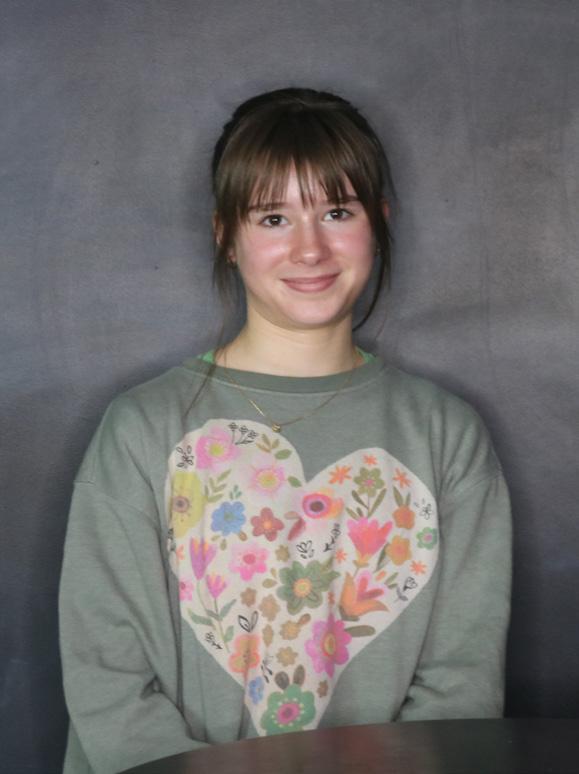
The haters are gonna hate, but here’s my personal opinion on Taylor Swift’s new album by Stella Gaylord
Iwas beyond excited for Taylor Swift’s new album “The Tortured Poet’s Department” to drop on April 19. I had it in my brain that it was going to be a slower album, possibly similar to “Evermore” or “Folklore” while also giving “Reputation” vibes. Although I was wrong about the similarities, I was not disappointed. Swift decided to surprise everyone with a double album, releasing 15 extra songs to go along with the original 16.
After listening to both albums, I have come to some harsh conclusions. Previously my favorite albums were “Folklore”, and oddly enough, “Midnights”. Taking the spot of first place is “The Tortured Poets Department”. Her lyrics throughout this album were insightful and sad, while the sound is generally upbeat and powerful. Songs like “But Daddy I Love Him”, and “Who’s Afraid of Little Old Me” both send messages of power and hope, while songs like “So Long, London”, and “loml” (which is an underrated masterpiece) talk about hurt and pain.
My top songs are “I Can Do It With a Broken Heart”, “Florida!!!”, “My Boy Only Breaks his Favorite Toys” and “loml”. I think something that was so interesting to me throughout the whole album was how I kind of felt like it had a Lana Del Rey infusion. “Fresh Out the Slammer”, “Down Bad” and “Florida!!!” all seemed like songs I hear her singing. Another thing that stood out to me was how some of the songs I didn’t care about at first I started to love the more I listened to them.
My next conclusion is that the second album almost seems more personal. It seems like it was about Swift’s experience as a singer and how it affected her. While I found it touching to hear her feelings, I did not enjoy it. I thought it was repetitive and just didn’t match with the wow factor of the first album.
Taylor Swift’s new album is a huge triumph and is a must listen for both her new and old fans. It is a perfect showcase of her artistry and lyrical skills.
THE BATTLE FOR ATTENTION
Phones. They help connect and unite society, and through social media, individuals can explore their passions and share experiences that are important or meaningful to them. Despite the positives of social media, there are also negative elements. Social media, and phones as a whole, have been detrimental to mental health and well-being for numerous reasons. Aside from that, they are also detrimental to one’s attention span. According to a study conducted by Microsoft, the average attention span has dropped from 12 seconds in 2000 to eight seconds in 2013, and has likely dropped further in the 11 years since the study due to apps like TikTok, Instagram Reels and YouTube Shorts. People need healthy attention spans to simply be productive in life. Common activities such as learning, concentrating, being productive and even thinking are enabled by one’s attention span. Constantly lowering attention spans make it difficult to pay attention at school, be productive at work or simply spend time with friends and family without spending excessive amounts of time on phones.
Eighty six percent of the Triangle staff agrees that their phones distract them from
being productive at school. Because of this, it is more difficult for students to effectively learn, work on assignments and study for tests. Phones can also distract students from paying attention to teachers during lessons, causing them to fall behind in class. Aside from difficulty at school, lowering attention spans make it difficult to be productive at work or even spend quality time with friends and family, uninterrupted by technology.
According to the National Institute of Health, “numerous reports have highlighted the detrimental effects of [phone] usage, such as issues that affect one’s sleep, mood and communal interactions.” Phones can lead to depression, social anxiety and difficulty interacting with others. Additionally, they interfere with the body’s release of hormones like dopamine and serotonin. These hormones are necessary for regulating emotions and play key roles in many body functions, such as sleeping, digestion and mood.
The National Institute of Health also states, “FOMO (fear of missing out) has also been identified as a risk factor for binge usage of the internet.” This fear of missing out is an additional mental health risk. FOMO can cause teenagers to obsessively
check social media in order to stay up with events and keep themselves updated with what their peers are doing. It is very dangerous for teenagers and high school students to compare themselves to others, and furthers the risks of depression, anxiety and unhealthy internet usage.
According to Time Magazine, “popular video platforms like TikTok and YouTube have also come under fire for employing algorithmic recommendation systems that can lead viewers down dangerous and addictive rabbit holes.” These algorithms encourage unhealthy screen times, and make it difficult for viewers to stay off of social media. The algorithms and targeted content used by social media companies are proving to be effective, with 91% of the Triangle staff having an average screen time above three hours per day. While the benefits of social media are numerous, it is having an increasingly large impact on our attention span, mental health and lives as a whole. With social media becoming more and more prominent in everyday society, it is becoming more clear that everyone must participate in the battle for attention.
ATTENTION SPANS OVER THE YEARS

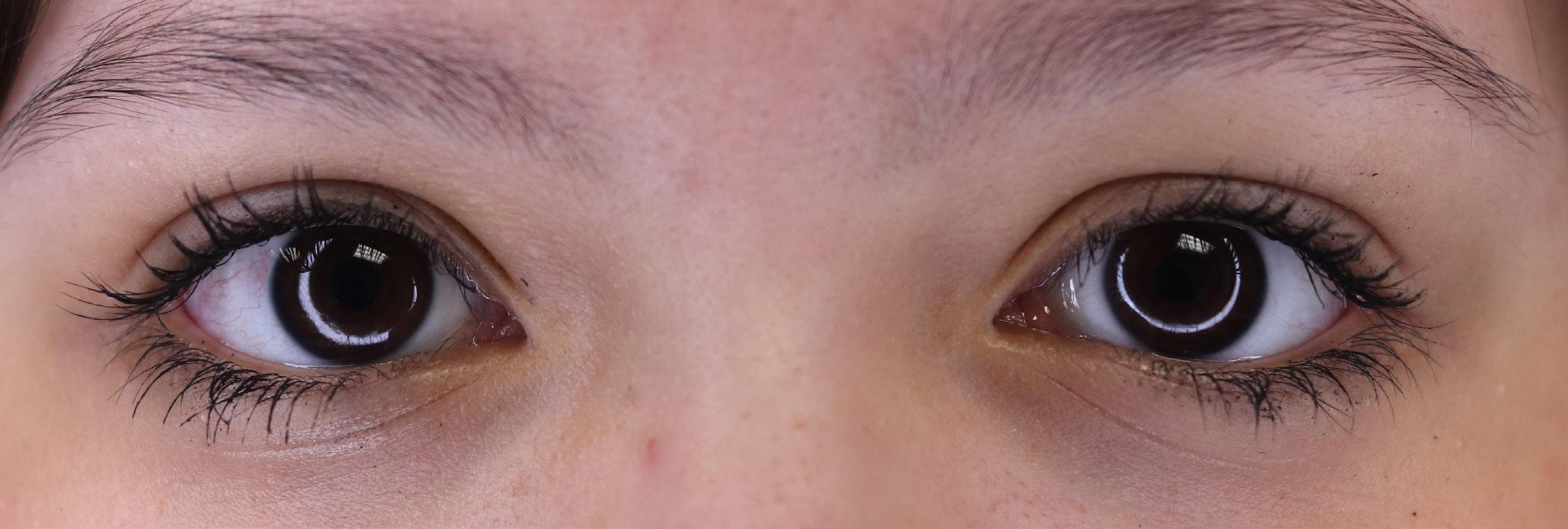
LEARNING TO LEARN
How UDL and Habits of Mind have changed the way attention spans have been approached in the classroom
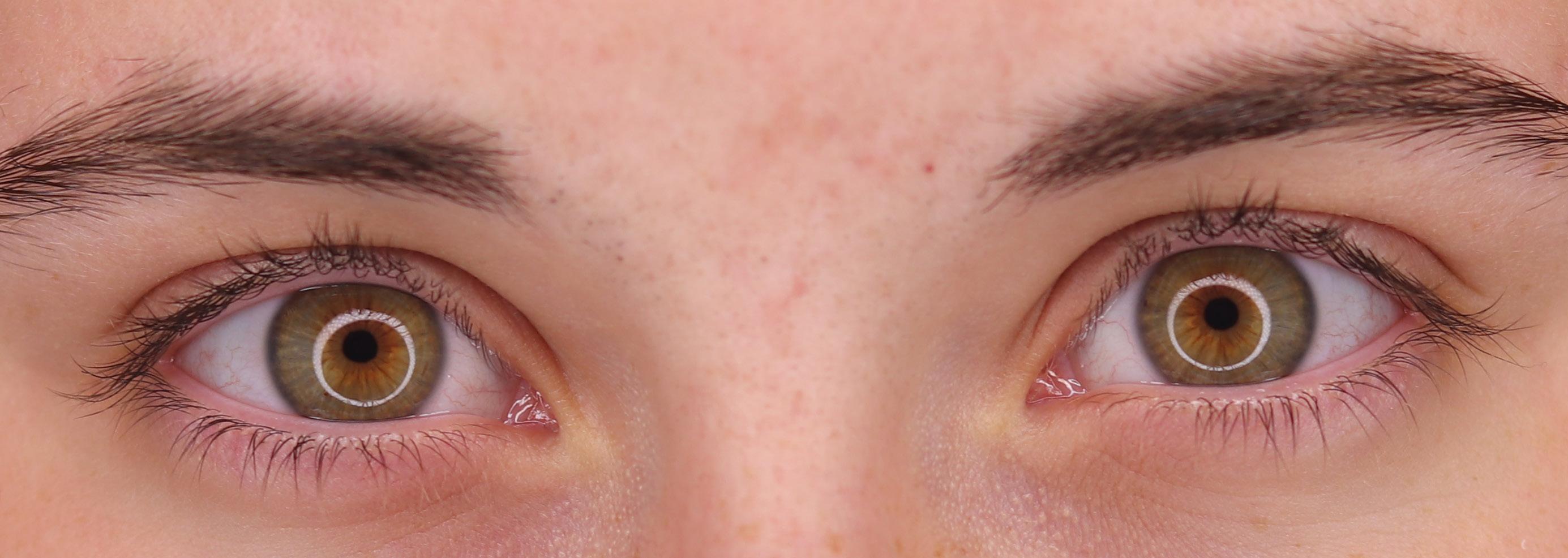

“You can’t design a curriculum that is ‘one size fits all’ because every single learner is different.”
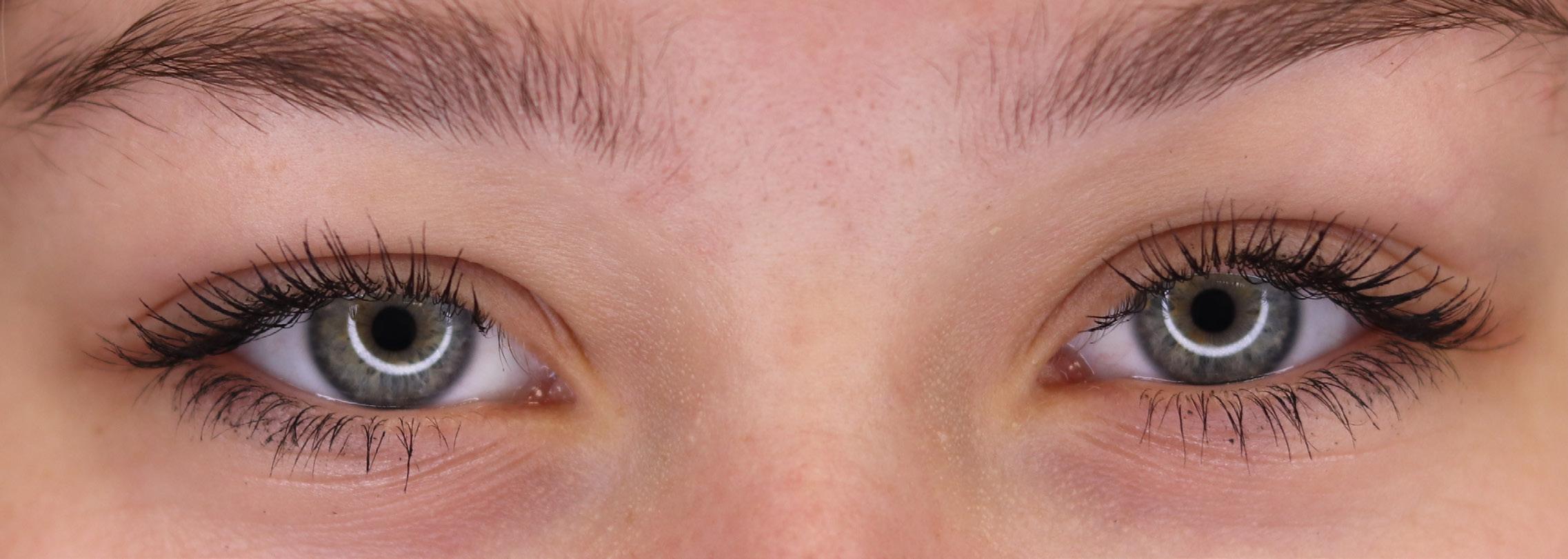

science teacher Wayne Britton
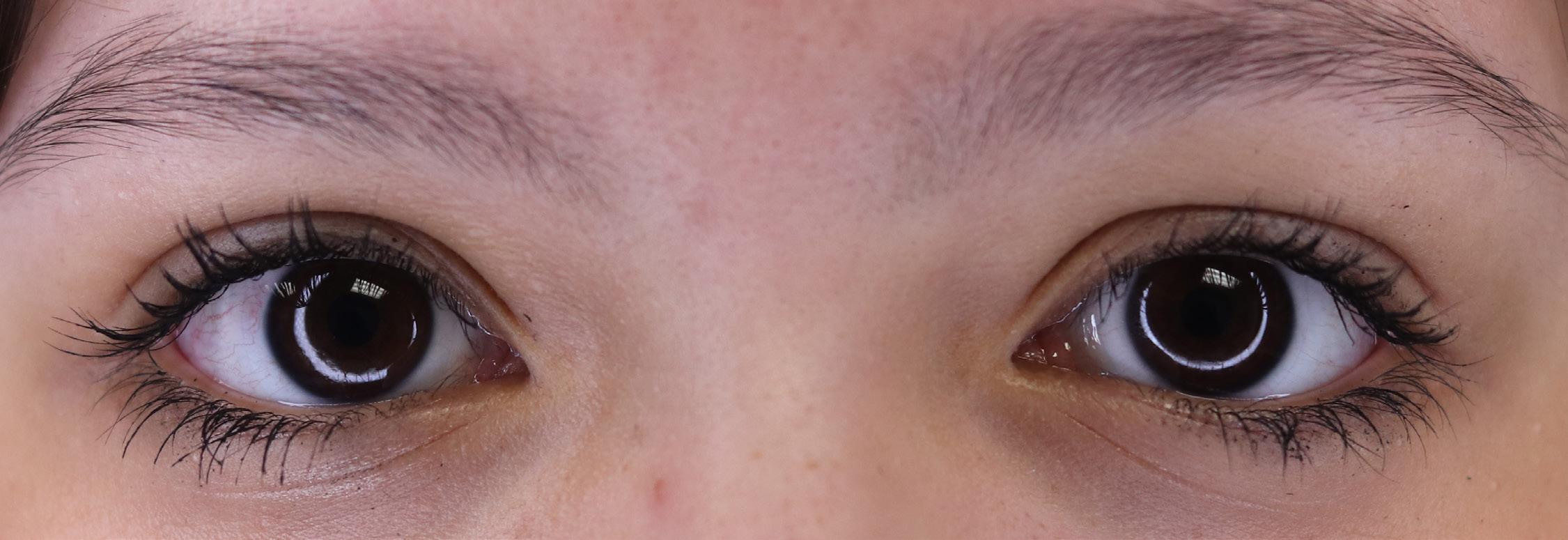

When a person thinks about a classroom, they may envision a teacher, students, desks and even posters on the walls. All of these components can be helpful for learning, but more goes into a productive classroom, such as “What is the teacher teaching? How is the teacher teaching it? Are the students paying attention? Are the students even retaining the information?” These are questions that educators have been asking themselves for years: ”What is the best way to teach?”
As cast.org emphasizes, engagement is the “WHY” of learning. Engagement is how students can be motivated to learn. According to cast.org, a student can be
DIGITAL DISTRACTOR
broken down into three subcategories: perception, language and symbols and comprehension. Perception describes not just using one sense to learn something, such as just listening to a lecture, but to use the other senses to learn the same subject. Language and symbols includes making content in different languages and such in order to reach more students. Comprehension is constructing and understanding.
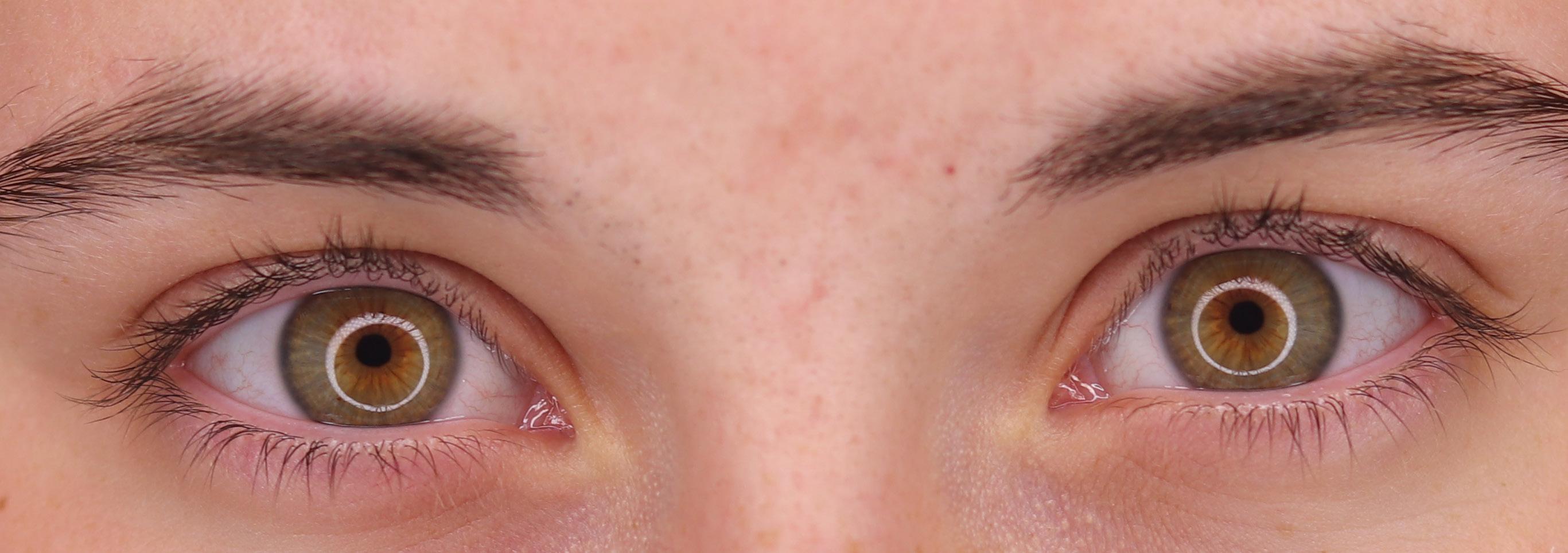

However, the answer is not always clear. Science teacher Wayne Britton said, “You can’t design a curriculum that is ‘one size fits all’ because every single learner is different.” There are a plethora of class subjects and learning styles alike. Everyone can retain information differently, so how could one person effectively teach so many things so that everyone can learn it?
How many students are on their phones during class? Source edweek.org
97% of students said they use phones during class
3% of students said they do not use phones during class
Action and expression is the “HOW” of learning. This is how learners can apply what they know. Action and expression are built up of three parts: physical action, expression and communication and executive function. Physical actions are the involvement with the materials. Expression and communication are using those tools to come up with new ideas and executive functions are the development of plans to make the most out of learning.
One half of the short answer is Universal Design for Learning (UDL). UDL is a set of guidelines set to help educators teach students in multiple ways to further ensure understanding among students. The UDL guidelines outlined by cast.org have been put into three categories: engagement, representation and action and expression, each with three subcategories.
engaged in three ways: recruiting interest, sustaining effort and persistence and self regulation. All of these can be essentially boiled down to creating a spark of interest, tackling challenges and holding onto the motivation to learn.
Representation is the “WHAT” of learning. Representation is how students can change the way that information is presented to them in order to better understand a subject. Representation is
Despite the complex structure of UDL, teachers report that the guidelines are very beneficial in classroom environments “It has definitely helped my students become more aware of their processes,” said Britton, “it’s given them more empowerment to say things to me about my behavior and about how things are operating in the classroom.”
Implementing UDL is also a battle in itself. With so many guidelines and rubrics, it’s easy to forget whether or not you’re actually implementing UDL. Math teacher Jason Perry shared his thoughts on UDL. “When we first started implementing UDL, I was expecting


Science teacher Lisa Enneking helps a student at the annual physics boat race.


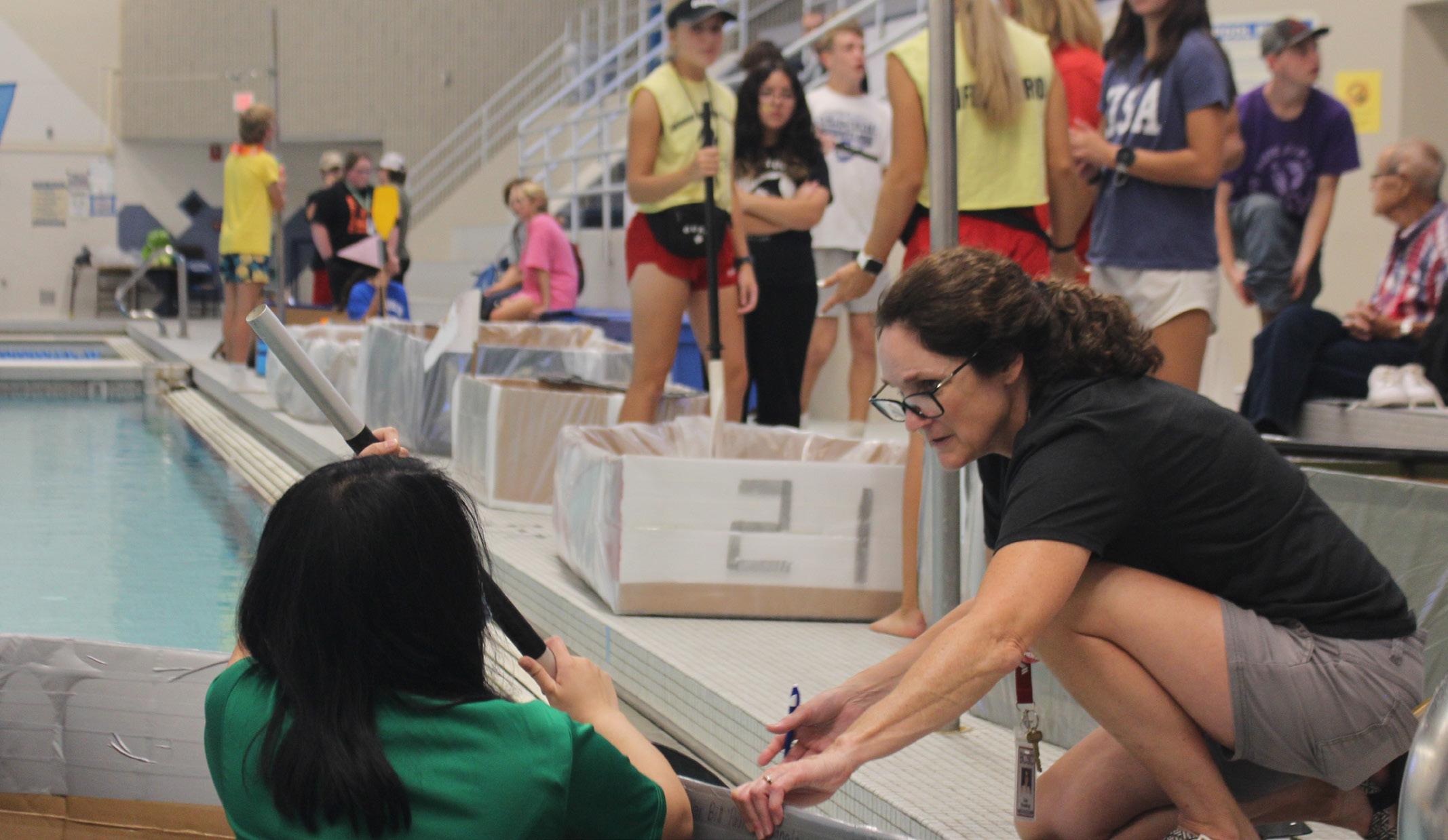


there to be some breakthrough teaching strategy, but when we started learning about it and practicing it more I realized ‘you know what, I already do a lot of these things anyway,’” Perry said, “And I think that effective teachers do these things anyway, regardless of they being labeled as a “UDL” teacher or not.”
The second half of the answer is the Habits of Mind. Along with UDL, many teachers have adopted the use of the Habits of Mind. The Habits of Mind refer to the 16 qualities that allow students to better understand how to overcome and persevere through tough times.
Perry shared his personal definition of the Habits of Mind and how it relates to learning in his classroom.
like the website you’re on, you’re on the next one in one swipe, if you don’t like a post that you read on social media, you’re just onto the next one right away.” The Habits of Mind teach real-world skills and mindsets, one of which is perseverance, or keeping on when the going gets tough. Using these habits,
Britton discussed his feelings about how it affects your teaching style towards the students.

“I would say that the habits of mind are any of our mindsets or our actions that will help promote continuous growth, I think that’s more of what we’re trying to get done and trying to more than the material that we’re trying to teach our students, yes math is the vehicle that I use to help kids learn, but what were really trying to teach high school students, middle school students and elementary school students is teaching different parts of your brain to learn in different ways, it’s less about the content.”
It’s also no secret that people’s attention spans have been seemingly decreasing. It seems educators have been trying to find a way to make students focus since the beginning of teaching and it almost
seems as if it’s getting more and more difficult. But are attention spans actually decreasing? The short answer is yes, according to news.northeastern.edu, attention spans have decreased from 2 and a half minutes to 45 seconds in the last 20 years. But 20 years is a long time, so naturally attention spans have changed, but not in the way many think. People, especially teens, still have the capacity to focus, they just focus on different things, as science teacher Matthew Parker observes, “They have an attention span and it’s the same. It’s just on things that aren’t related to school- on some devices. That takes a lot of their attention.” It’s true, devices have taken up more attention than other things, as 97% percent of students have admitted to using their phones during school, as according to edweek.org. So what’s the relation to UDL and Habits of Mind to attention spans?

In Britton’s words, “I think [UDL] was designed to help learning styles and not so much attention span. Attention span improvement could and possibly should improve if you’re learning in a way that’s better than you. If you’re learning in a way that’s not connected to how you learn, then of course you’re not going to pay attention to it because it doesn’t make sense and you’re going to want to shut down.”
Habits of Mind, however, are more attention-oriented than UDL. As Jason Perry said, we live in a time “where it’s kind of instant gratification - if you don’t
“You have to find a balance between who you are as a teacher and what your students need and or more importantly, how they can learn it. Not everyone learns the same way, everyone’s learning style is very unique. There are general broad categories on which we may place students, but they all have to be individualized,” Britton said. “That’s one of the reasons I talk to students so much and one of the reasons why I ask students so many questions when we are covering topics is because I need to understand what they know and what they don’t know but how they approach that information.”
At the end of the day, it all depends on the students just as much as the teachers. If the students try as hard to utilize the Habits of Mind as much as the teachers to implement UDL, the result would be a more understanding of topics that required the perseverance to overcome.


CAUSING A RACKET
Girls tennis team reflects on their seasonby Liz Carrigan design by Maia Jamieson
The players swiftly move across the court, the ball, a green blur, flies through the air and meets the racket with a resounding smack.
The crowd erupts in the stands and cheers as the match is won with one final bounce out of bounds from the ball. This description is a common scene for our girl’s tennis team.
Junior Annabelle Sun reflects on the girl’s tennis season so far.
“Our season is going great and I’m really enjoying it. We haven’t had a lot of matches due to rainouts and matches being canceled but I’m enjoying the matches we’ve played,” Sun said. “I’m looking forward to the matches we have down the road.”
Sports contain many aspects that are enjoyed as well as some that are more difficult. Junior Grace Conner shares her favorite and least favorite part of tennis.
“My favorite part of tennis is playing doubles. My doubles partner [Lizzie Bodart] and I have played well together. I enjoy having a teammate to play and have fun with,” Conner said. “My least favorite part [of tennis] is when you are doing worse than you know you can play. Sometimes it’s hard to get out of a bad mindset,”
Additionally, Sun shares her perspective on the ups and downs of tennis.
“My favorite part about tennis is all the connections that I can make with my teammates but also being able to believe in myself,” Sun said. “My least favorite part is the pressure when it comes to playing competitive matches.”
Setting goals during a sports season allows players to see performance improvement. Conner shares her goals for next season.
“I hope to continue to get better and make varsity again,” Conner said.
Additionally, Junior Natalie Cantu reveals her aspirations for her next season.
“My goal for next season is to be captain, I want the team to feel more like a family,” Cantu said. “I hope to continue our reputation of winning and being a strong team. Since it’ll be my senior year I would like to leave on a high note.”
Every sport requires beginning somewhere and an element of passion to practice. Conner clarifies where she started in her tennis career, and why she is passionate about it.
“My mom was a tennis coach and got me interested. I started pretty late for a tennis player, around 10 years old,” Conner said. “I am passionate about tennis because I have put so much time and effort into it. I practice year round. But I also just enjoy playing,” Conner said.
Sports can be a bearer of enjoyment and growth. Cantu elaborates on the joy she gets from playing tennis.
“Tennis has many good qualities, it is competitive, a good workout, enhances discipline, and demonstrates the importance of teamwork. I am very passionate about tennis as it can be whatever you want it to be, it can be very competitive or it can be a fun rally where you just meet up with friends to catch up on life,” Cantu said. “I’ve made some amazing friends while being a part of the team, and it is a fun activity to play on any day.”
Sun explains her experience of starting tennis young and her passion for the sport.
“I’ve been playing tennis since I was around 6 years old. I’ve enjoyed playing the sport since, so it was natural for me to join the tennis team when I entered high school. When I was a freshman I also had a lot of senior friends on the team so that also allowed me to be more involved,” Sun said. “I enjoy how tennis is a very mental and physical sport. You need endurance and skill but also a good mental mindset when playing. I also enjoy being able to play the sport with all my friends and the memories that come with it.”
TENNIS TECHNIQUES SERVE
Three basic moves that tennis players focus on during matches
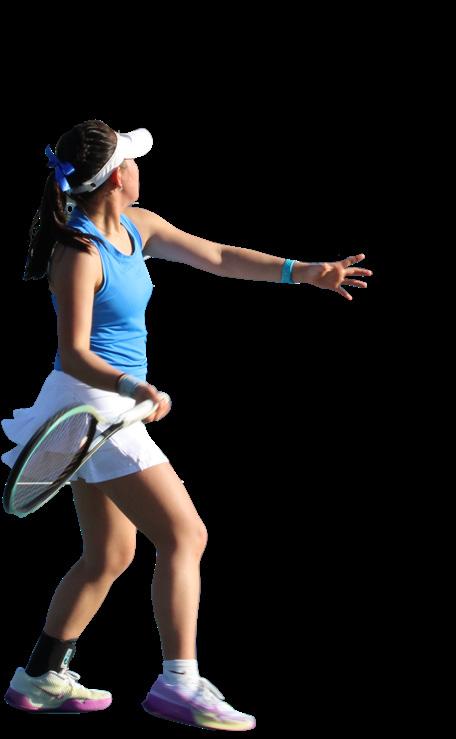
FOREHAND
BACKHAND
